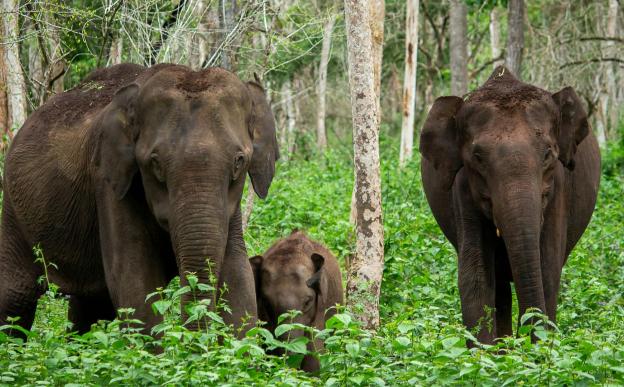
A crab bridge in Christmas Island, Australia, facilitates the safe passage for the migrating red crabs (Photo credit; Wondrous World Images via parksaustralia.gov.au)
In Christmas Island, Australia, signposts alerting passers of animal-crossing don’t suffice; traffic detours, public announcements, and permanent bridges are in need, as the island roads must make way for a sea of crabs to pass by! The spectacular annual event is a natural wonder.
The island is the only home to the gorgeous red land crab (Gecarcoidea natalis). Millions of these shy, solitary and territorial crustaceans live under dried foliage, burrows, crevices and gardens, feeding on seeds, leaves and dead animals, balancing the island’s ecosystem.
Every November, just as the rains begin, the male crabs emerge from their hideouts to start an arduous journey towards the ocean. Soon the females join the mass exodus — a synchronised event that follows a lunar rhythm with amazing accuracy.
Crossing the city roads, they take 7-9 days to reach the coast. On the way, if the climate plays truant, they stop and picnic. The males are the first to reach the shore. After a refreshing dip in the water, they get busy digging burrows. Soon the females catch up, bathe and head to the burrows to mate. After mating, the males embark on the return journey after a quick dip in the water.
The females remain in the burrows, brooding about 100000 eggs in their belly-pouches, waiting for 2-3 weeks for the third quarter of the waning moon. Then, just before dawn, they descend, hustle at the neap tide and do a jiggle to release the eggs into the water. When done, they quickly swim back to the shore and march homeward.
Meanwhile, the eggs hatch immediately in water and remain there for a month as larvae. When they reach a prawn-like stage, they swim to the shore and metamorphose into 5-mm size baby crabs. The babies waste no time and begin the dangerous march towards land! There they build dens and live obscured for the next 3-4 years till they become adults.
Despite enormous efforts, accurate timing, and life-risking feats by the parent crabs for their progeny’s survival, the larvae are heavily predated in the oceans. However, once in a few years, a large batch survives to become land crabs, thereby balancing their population on the island.
Note: A version of this story was published in Deccan Herald on 09-08-21





